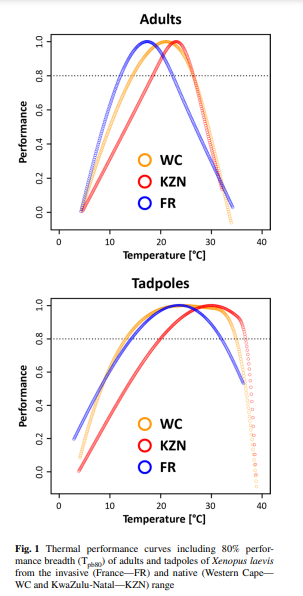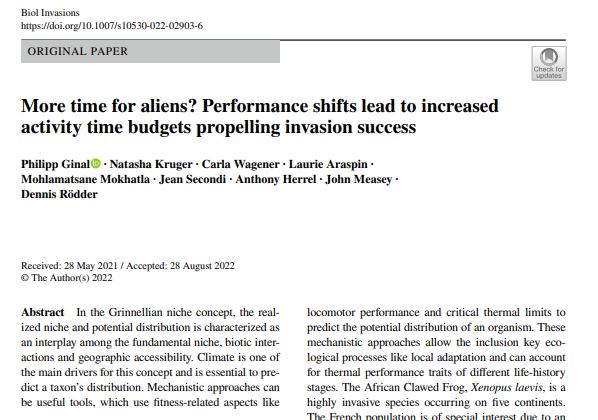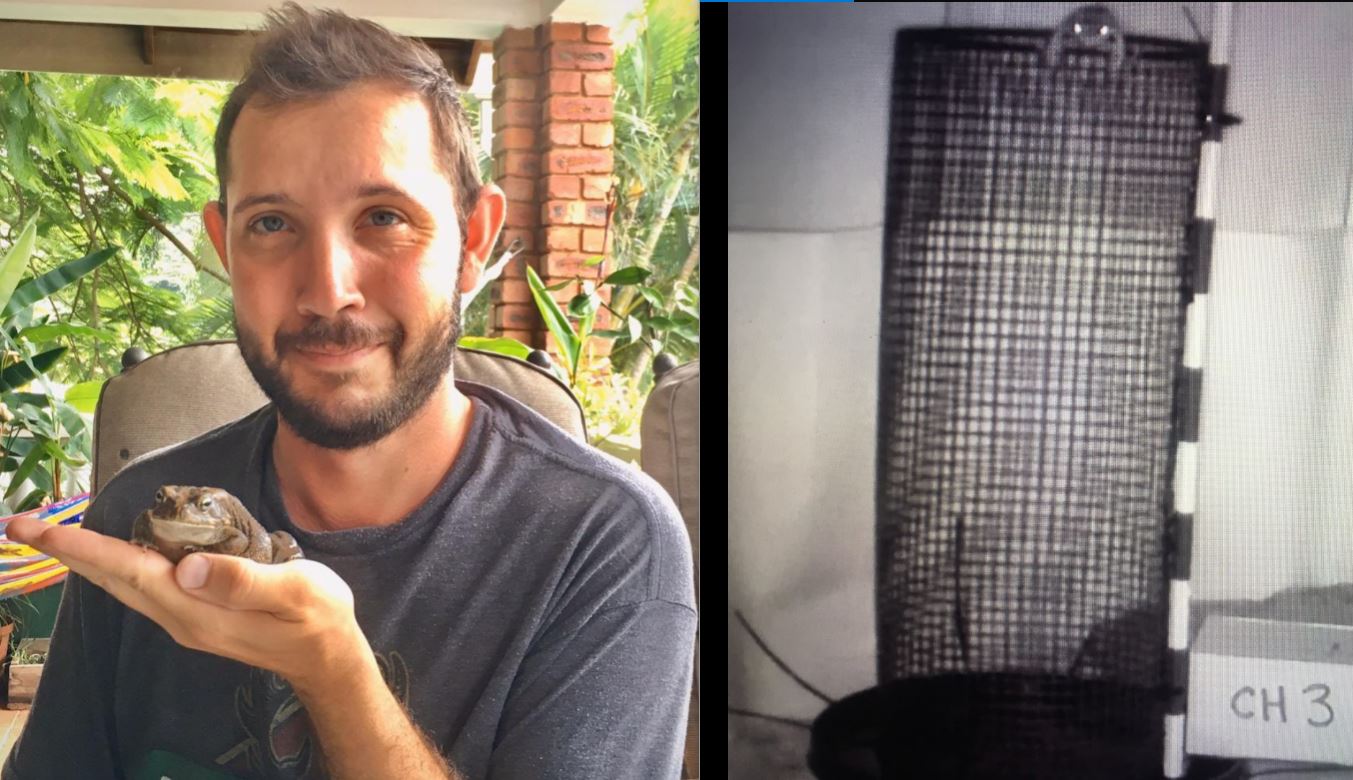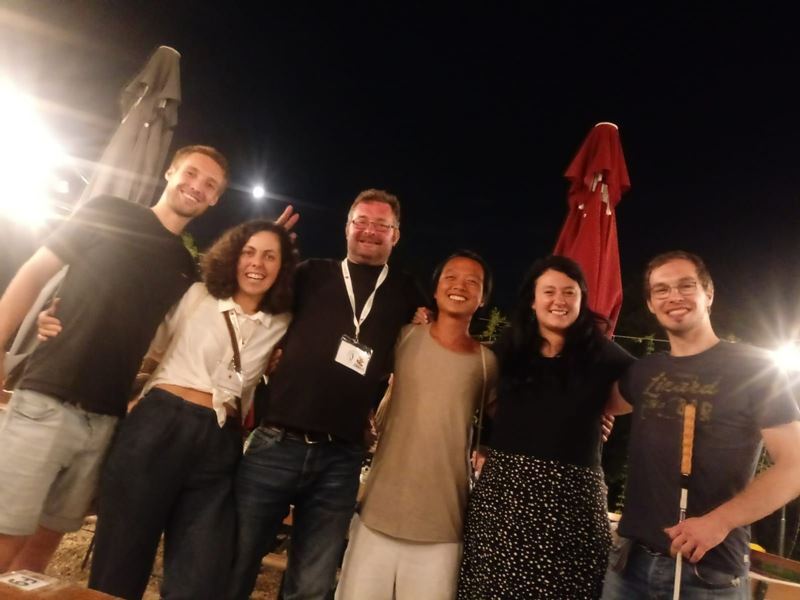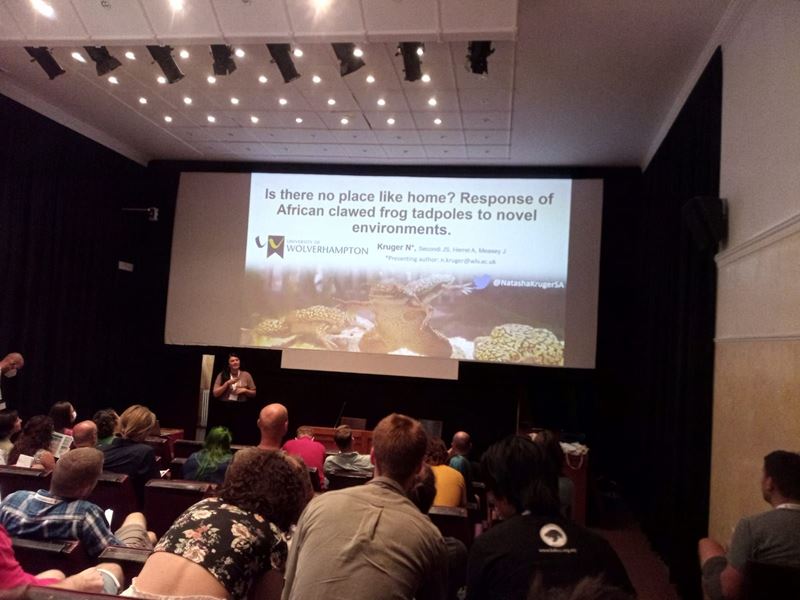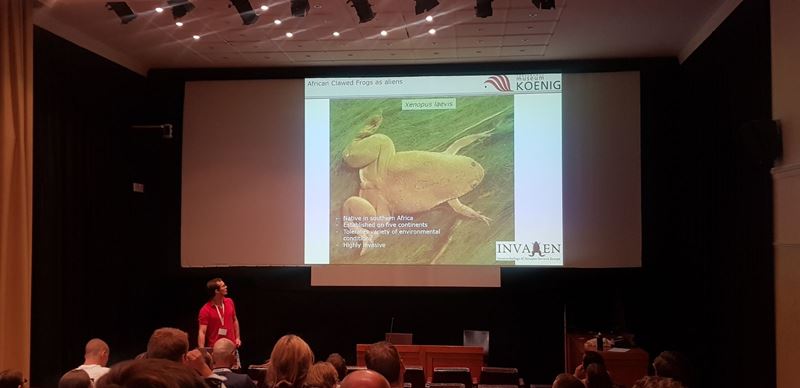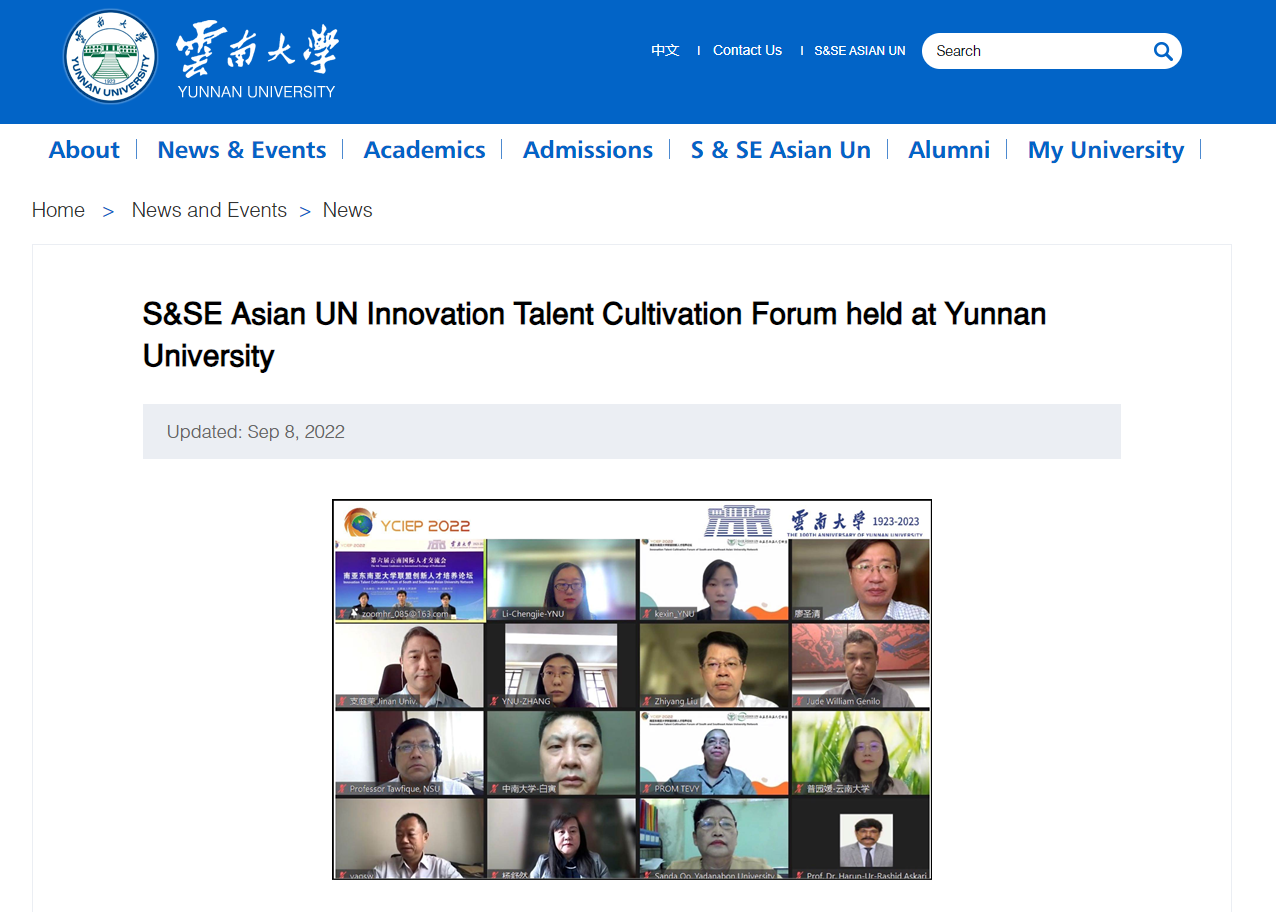Moving from correlative to mechanistic approaches of modelling African Clawed Frog distribution
We have already produced a number of different correlative models to predict the distribution of African Clawed Frogs (Xenopus laevis) in Europe. In the latest paper by Philipp Ginal (PhD student of Dennis Roedder from Museum Koenig, Bonn), we take a new approach by using data from the physiology of several different populations of both adults and tadpoles of X. laevis.
What this new model tells us is that despite tadpoles being apparently frail and far less robust than adults, when you compare the physiological data generated by Natasha Kruger and Carla Wagener in their theses to that of adult frogs (data produced by Mohlamatsane Mokhatla and Laurie Araspin), the tadpoles actually have a broader thermal niche. This means that instead of adult distribution being limited by tadpoles, it's actually the other way around.
This rather surprising result means that we are not going to see any reduction in the forecast range by including tadpoles in our model. Moreover, the adaptations seen in the adult French Xenopus have resulted in a far greater potential distribution for this group of animals in Europe, compared to the potential for frogs from either the Western Cape or Kwa-Zulu Natal.
Our results show the value of having more than one life-history trait in a species distribution model, even though this might not provide the expected result. In addition, we demonstrate the importance of rapid adaptation in invasive species that mean that they have far greater invasive potential than the populations from which they were founded.
To read more:
Ginal, P., N. Kruger, L. Araspin, M. Mokhatla, J. Secondi, A. Herrel, J. Measey and D. Rödder (in press) More time for aliens? Performance shifts lead to increased activity time budgets propelling invasion success. Biological Invasions https://doi.org/10.1007/s10530-022-02903-6 pdf
